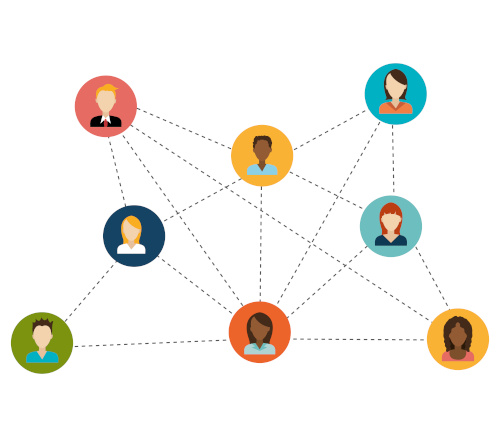I am currently in an online doctoral program at Winona State University. One of our recent discussion queries required answering the following prompt: “Share three pieces of your own PLN that you think would be helpful to the others.”
I wasn’t quite sure if I should share platforms, tips, or connections, so I will be sharing three things I wish I would have considered sooner than later.
1. Drop the IRL
I have listened and visited with Angela Maiers–an educator, consultant, and speaker–a number of times. One thing that she frequently shares in her keynotes is around dropping the “IRL” (in real life) mentality when talking with your online PLN. For those who connect with you virtually, a digital relationship is IRL. You may never physically meet these individuals due to logistics, geography, or time and that is ok. Such relationships do not necessarily become instantly more meaningful when you meet in the same moment of time or space.
Darci Harland uses the term “digital colleagues” (DC) within research to support similar mentalities of the value of these online relationships attributed to working and collaborating during the COVID-19 pandemic.
2. Blend professional and personal
I strongly suggest having a relaxed presence within social media–one that honors our professional work while acknowledging that we are people with real lives. In the past, I kept siloed profiles to make sure that my personal and professional lives didn’t mix, that my professional communications were spotless, and that my digital footprint was as clean as possible. As I grew confident in the profession, understood social media more, and cultivated a group of online connections, I stopped and shifted my efforts over to my main accounts.
Blending professional and personal accounts allows one to share their authentic self and not perpetuate “the best life ever” mentality—the one that sometimes seeps into Instagram and Pinterest posts, that can slowly distort our perceptions of reality, and that can erode our self-perceptions of our own lives. This shift has also allowed me to make connections over personal interests, professional colleagues, fun events, and lifestyle choices that make the people we connect with real people.
3. Ask questions
This can be the most daunting. I didn’t want to look dumb. I didn’t want to look uneducated. I didn’t want to look like I didn’t know how things work. For quite some time I wouldn’t ask questions–and phew, that was the wrong approach.
When I started asking questions (even about things I already knew), I noticed that I started sparking discussion, sparking divergent thinking, and sparking new connections. I realized that, while I might have “looked dumb” to others, I didn’t care because I wanted to know more, and if I had questions, others did, too. This is something that is often shared with students in classrooms, yet I think it was challenging for me because I was publicly asking for help (which is challenging even in small groups) and that I knew the post would live on forever. Disclaimer: I am still working in this one!
- 4 ways to encourage play in education - April 25, 2024
- CoSN IT Leader Spotlight: Lisa Higgins - April 25, 2024
- It’s time to pay student teachers - April 25, 2024


